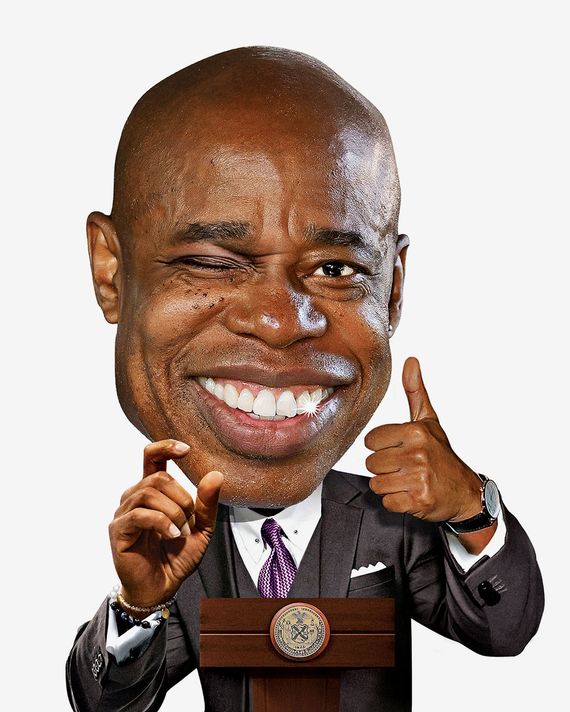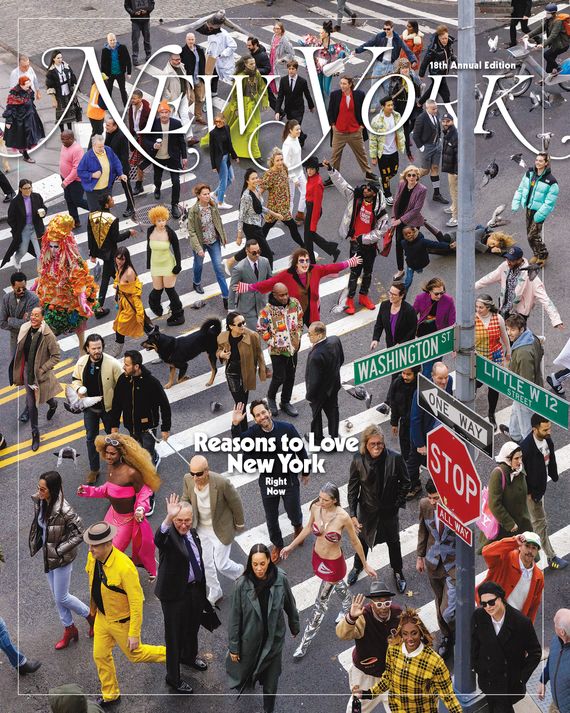
On a crisp October day, Mayor Eric Adams stood in a three-piece suit in front of the press to publicize an important policy that his administration had been working on. “We’re announcing a once-in-a-generation- change,” Adams declared. The big win? “We’ve shifted the time that people can set out black bags and trash from 4 p.m. to 8 p.m.”
The idea was that trash would be sitting out for less time, which meant less time for rats to get into it. It’s a small step in addressing the city’s garbage problem, but there is an actual solution for getting rid of the rats Adams hates — putting out trash in bins. (In fact, you can still put your trash out earlier if it’s in a bin.) That change, however, would require hefty political vision and funding to overhaul our current system — the kind of challenge that, say, a mayor might tackle. Yet instead our city’s leaders were patting themselves on the back for delaying rat dinnertime by four hours.
The administration’s proclamation was the mayor’s first year in miniature: a lot of fanfare for what, in reality, amounted to the most cosmetic of changes. In June, Adams gave a thumbs-up to the cameras as a bulldozer crushed a mountain of 100 illegal dirt bikes behind him. “Today, as we stand in the shadow of the Freedom Tower, we are freeing ourselves from these destructive pieces of machinery,” Adams said. A couple months later, he smashed a noncompliant outdoor-dining shed with a sledgehammer. He has also spun his own partying as a means of personally boosting the economy. As Adams told the New York Post, “When I go out I am patronizing my restaurants, my hotels, my dishwashers, my cooks.”
Performance is an inherent part of politics. But perhaps no prior mayor has ever leaned so far into spectacle, collapsing the distinction between the player and his role. “I’m the mayor,” Adams is so proud of saying, as if acting like a chief executive were the same thing as being one. While Bill de Blasio personified the Park Slope dad and Michael Bloomberg the Upper East Side plutocrat, Adams is politics as marquee lights and subway impresario.
Administrations usually come to the office with big plans — de Blasio pushed for universal pre-K; Bloomberg put schools under mayoral control — but it remains difficult even to say what exactly Adams wants to do. His first year is best known for images of an empty City Hall and the mayor inexplicably lying about eating fish. If he has a signature issue, it is crime, but this is also his Achilles’ heel. While New York is still much safer than in decades past, a number of high-profile subway attacks defined his early tenure. By the fall, he was claiming that the very narrative he stoked as a candidate — that a crime wave was engulfing the city — was now being used by the press to contribute to a “perception of fear.”
But perception is policy in the Adams administration. “Bing-bong, your mayor’s on TikTok,” our mayor said when he joined the platform. He tells women the “best place” to stand on the subway platform if they want to be safer. (Only now is the MTA finally testing out platform barriers — with a pilot program at just three stations.) He raises awareness about how to avoid drowning at city beaches. Rather than redesign the city’s streets to make them safer, he spent $4 million on billboards urging drivers to “slow down.” (One study showed that such signs can actually be distracting.) In July, his administration put up a strange video instructing New Yorkers on what to do during a nuclear attack. Meanwhile, he is seemingly everywhere all at once, sliding down fire poles and attending credit-card parties with Dr. Oz and Cara Delevingne.
Unfortunately for Adams, his is the kind of act that works best on tourists, and New Yorkers are catching on. By June, while more than half of the city said that it liked his style, Adams’s approval rating on his actual job performance had sunk to 29 percent. As one person told the New York Times in August, “He goes out there and thinks he’s kind of a celebrity when he should be down on the ground rolling his sleeves up doing the work.” Even Adams’s staunchest tabloid ally, the Post, has turned on him.
Yes, Adams has done some stuff. He helped pass legislation creating a public-housing preservation trust, funded 1,400 new “stabilization” beds for the homeless, flooded the subway with more police, and expanded child-care funding for low-income families. But he’s also presided over a city in which rents have hit historic levels and homelessness is at an all-time high. More police actually haven’t made transit safer, while his latest proposal, to round up the mentally ill against their will, has been met with shock and confusion. Adams has walked back some of de Blasio’s most significant accomplishments, including universal 3-K and reforms to better integrate the city’s top schools. Despite a mayor who runs on vibes (and the crystals that lie underneath the city), it’s clear to anyone trying to actually live in New York that those vibes are off.
And yet he remains weirdly watchable, exuding an energy that is both deeply familiar and bizarrely off-kilter, a New York character through and through. This city needs its entertainers and hype men, and Adams has established that he is surely one of them, much to the delight of gawkers who demand to be entertained. But the city needs a mayor, too.
More reasons to love new york
- A $45 Million Effort to Make Pregnancy Less Deadly in Brooklyn
- The Boys Who Got Lost Under Staten Island
- Reasons to Love New York Right Now






